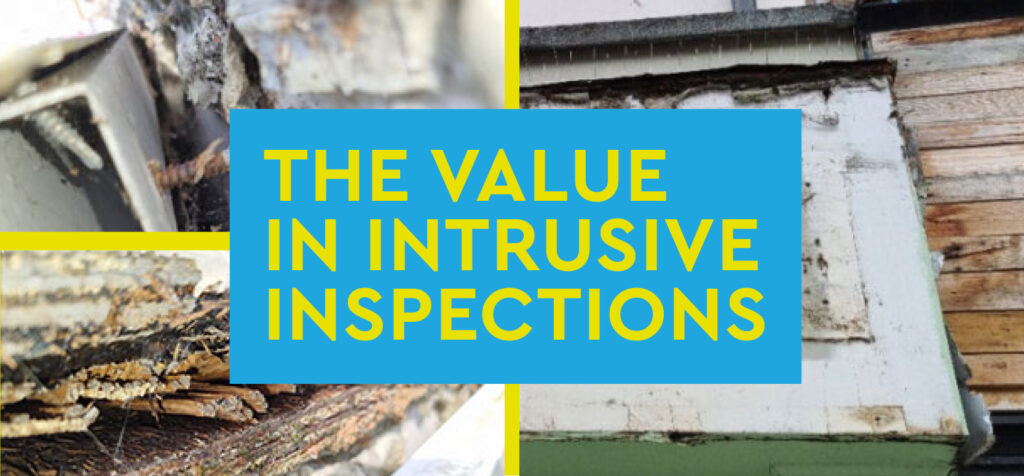
It’s a recurring feature of our blogs that we look at how signage can be affected by bad weather and age. Which may sound a little out of step with the good weather we are currently having. But even when the sun is shining, the effects of the recent heavy rain and continual cycles of hot and cold have an effect. Which is why we we are always urging you take the opportunity to fix the roof while the sun shines. It is also a good time to show why we place such value in intrusive inspections. They are an excellent way of finding out the true condition of your signage and how it is supported.
To give you a better idea about intrusive inspections, here is a case about a retail customer who has a high street property in the North East. This had a sign that was beginning to cause concern with the tenant.
The Property
The premises visited is a common sight in any typical urban centre. It is around 5m in width with double doors opening straight out onto busy pedestrian precinct. The building itself was constructed in the 19th Century, with a façade that was fitted probably between 30 – 50 years ago. Location for the signage was via a flat faced mounting surface. This jutted forwards from the front face of the property.
The tenant had called Cygnia after discovering the signage had moved following a bout of bad weather. This is of course good practice. You should visually inspected your signage after high winds or heavy rain, because they may present a risk to your staff or the public.
Upon arrival it became quickly apparent to the engineering crew that the sign presented a clear danger to the public. As a result, the sign was now a health and safety issue and removed. This allowed a more informed assessment of the condition of the façade which would guide the next steps to take.

The fascia behind the signage was constructed from wood and the causes behind the signage moving were soon revealed.
Water ingress
A lack of flashing around the construction had allowed water (possibly in part from the nearby drainpipe) to soak into the plywood fascia and soffit. Over time the changing seasons and temperatures would compromise the integrity of the plywood.
Weakened fixings
The loss of strength in the plywood material directly impacts the ability of the signage fixings to maintain their station. The screws holding the bracketing for the signage against the fascia was failing, allowing the sign to peel away. So it was therefore a question of when, not if, the sign would fall and potentially seriously injure someone below.
Rotting wood
With the plywood soaked with water over an extended period of time, the wood had delaminated and softened. A simple pressure test showed the front was soft and giving way when pushed in with a finger. Further evidence of rot was revealed by the emergence of fungal growth behind the sign, demonstrating the wood had become home to living organisms.
The Benefits Of Regular Checks
This callout highlighted the importance of older properties having regular intrusive inspections of their fascias. A regular check of the façade would have revealed this issue some time in advance. This would give the tenant or owner the time to plan ahead to refurbish the soffit and fascia. The situation had unfortunately become so dangerous that there was no choice but to remove the signage. In addition a full intrusive inspection is needed to determine the full extent of the damage. This would ensure any repairs restored the strength of the construction of the façade.
If your retail property has an ageing fascia, only by having regular expert checks can you be confident your signage will be safe to remain in place. An intrusive inspection is simple to arrange and will help you arrange a cost-effective signage maintenance schedule. Cygnia’s engineers can be onsite and, with their specialist equipment will be able to give you a full health report for your signage. Contact us now to arrange a local crew to visit your signage and help keep it working hard to bring customers to your door – safely.
